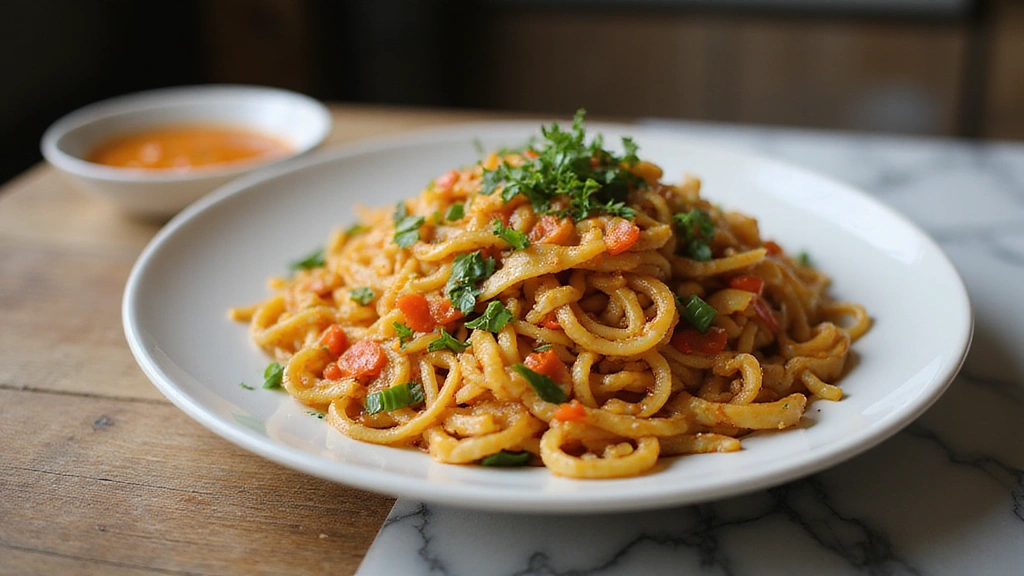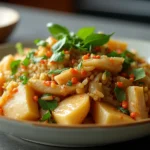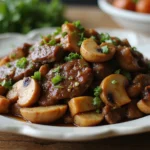This classic Simple Chinese Egg Noodle Stir Fry brings together centuries of culinary tradition with modern techniques to create a dish that’s both comforting and elegant.
The harmonious balance of savory soy sauce, fresh vegetables, and tender egg noodles creates a memorable dining experience that will have everyone asking for your secret.
I discovered this recipe during my travels through China, where local chefs have perfected it through generations of careful refinement.
Whether you’re preparing a casual family dinner or hosting a special celebration, this stir fry delivers impressive results with straightforward preparation.
The History and Cultural Significance
• Simple Chinese Egg Noodle Stir Fry traces its origins to Northern China, where it was originally created by home cooks adapting to local ingredients.
• The dish evolved over decades as ingredients like soy sauce and fresh vegetables became more accessible, eventually becoming the beloved version we know today.
• In Chinese culture, this dish traditionally appears at family gatherings and celebrations, symbolizing unity and abundance.
• While many variations exist across different regions, the authentic version maintains a balance of flavors and textures that sets it apart from imitations.
Recipe Overview
Nutritional Information (per serving)
Ingredients
Essential Equipment Guide
Wok: A wok is essential for achieving the high heat needed for stir-frying, allowing for quick cooking while preserving the crunch of vegetables. Look for a heavy-bottomed wok that retains heat well, and if you don’t have one, a large skillet can be a suitable alternative.
Spatula or Wooden Spoon: This tool is important for tossing and mixing ingredients without damaging them. A wooden or silicone spatula is ideal as it is gentle on non-stick surfaces, ensuring the noodles don’t stick or tear.
Measuring Cups and Spoons: Accurate measurements of sauces and seasonings are crucial for achieving the perfect balance of flavors. Invest in a set of dry and liquid measuring cups for ease of use.
Preparation Methods
Cooking Noodles: To achieve the perfect texture, cook the egg noodles according to package instructions until al dente. This ensures they remain firm during stir-frying. Rinse them under cold water to stop the cooking process and prevent sticking.
Stir-Frying Technique: Stir-frying involves cooking over high heat while constantly stirring the ingredients. This method locks in flavors and keeps vegetables crisp. Use a quick and consistent motion to evenly cook all ingredients without burning.
Flavor Infusion: Adding aromatics like garlic and ginger at the right time is crucial for a flavorful dish. They should be added just before the vegetables to release their essential oils without burning, enhancing the overall flavor profile.
Step 1: Prepare Ingredients
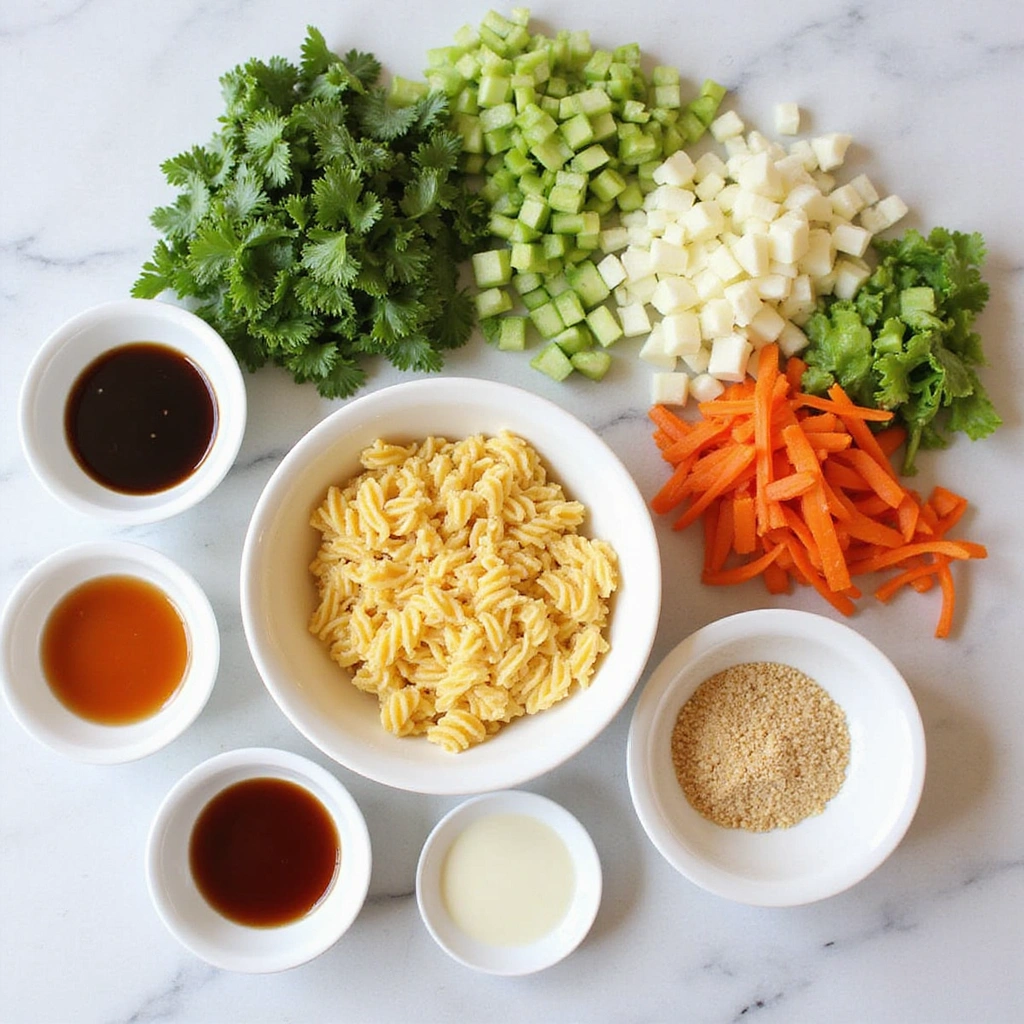
Gather all your ingredients before you start cooking.
This includes chopping the vegetables and measuring out the sauces.
Having everything ready will make the cooking process smoother and faster.
Ensure your noodles are cooked and rinsed to prevent clumping during stir-frying.
Step 2: Heat the Wok

Place your wok over high heat and add the oil once it’s hot.
Swirl the oil around to coat the surface evenly.
You want the oil to shimmer, indicating it’s ready for stir-frying.
Avoid overheating to prevent the oil from smoking and imparting a burnt flavor.
Step 3: Sauté Aromatics

Add minced garlic and grated ginger to the hot oil.
Stir them quickly for about 30 seconds until fragrant but not burnt.
This step is crucial for infusing the oil with flavor.
Keep stirring continuously to prevent the aromatics from sticking to the bottom.
Step 4: Add Vegetables
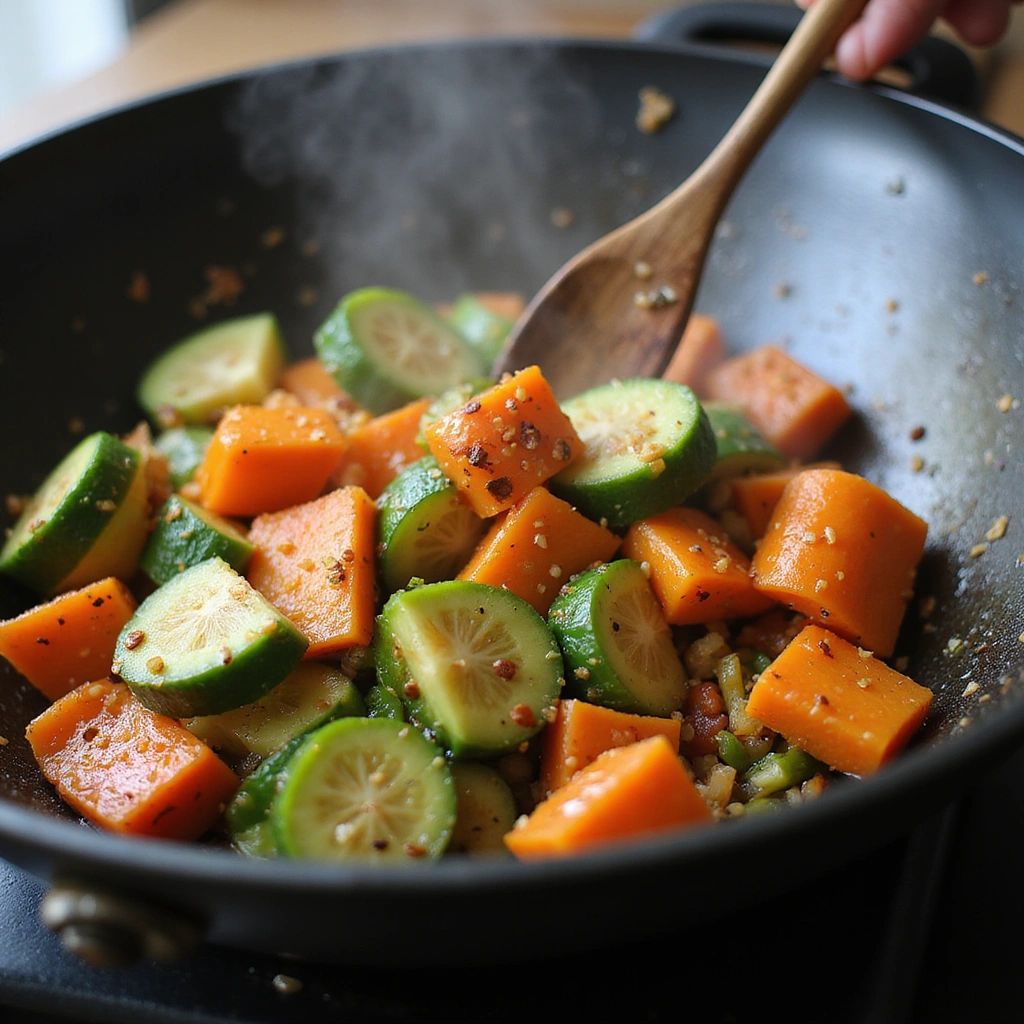
Toss in the sliced bell peppers, carrots, and snap peas.
Stir-fry for 2-3 minutes until the vegetables start to soften but remain crisp.
This is when the vegetables should retain their vibrant colors and crunch.
Maintain high heat and keep everything moving in the wok.
Step 5: Incorporate Noodles

Add the cooked egg noodles to the wok with the vegetables.
Use your spatula to gently mix them in, ensuring the noodles are heated through.
Try to separate any clumps for even distribution of ingredients.
This step helps the noodles absorb the flavors from the vegetables and sauces.
Step 6: Pour the Sauce
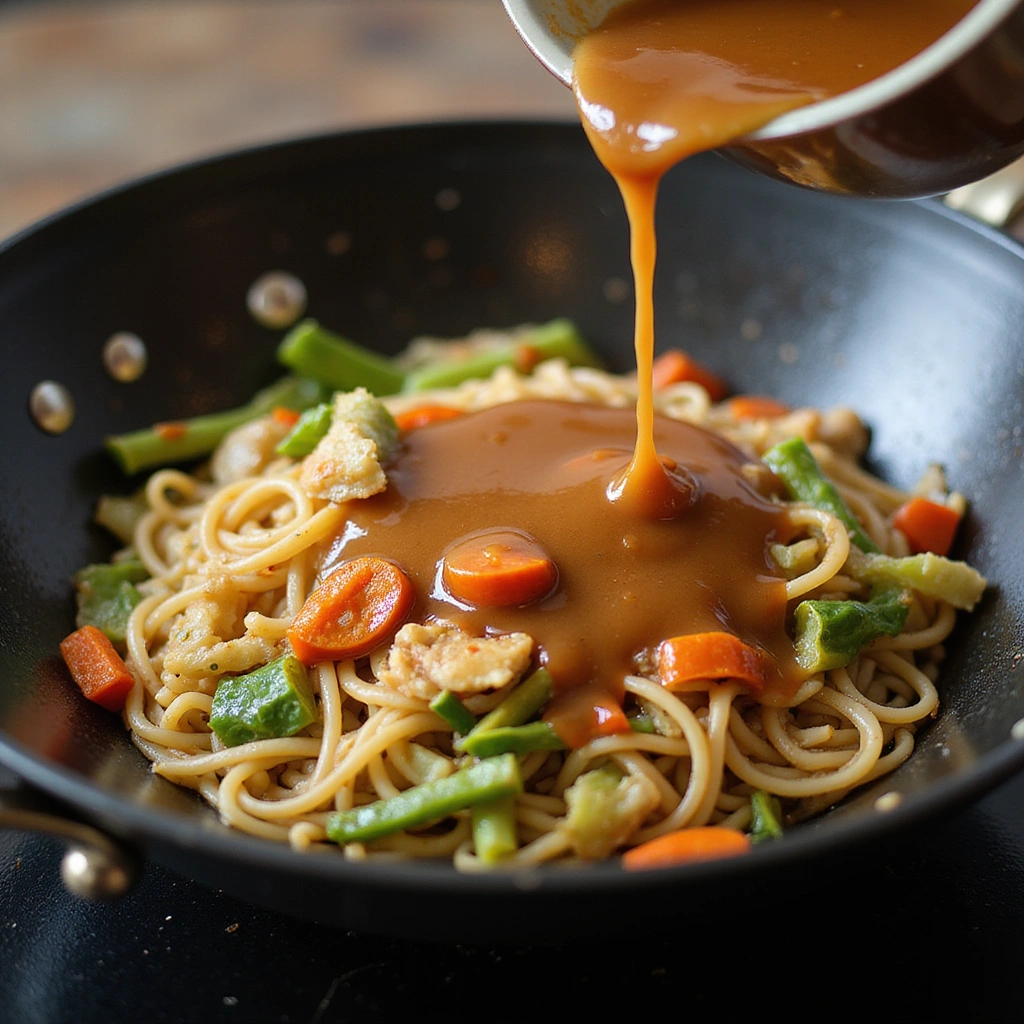
Drizzle the soy sauce, oyster sauce, and sesame oil over the noodles and vegetables.
Stir well to ensure everything is coated evenly.
Watch for the glossy appearance that indicates the sauce is well incorporated.
Adjust seasoning with black pepper according to your taste.
Step 7: Final Toss
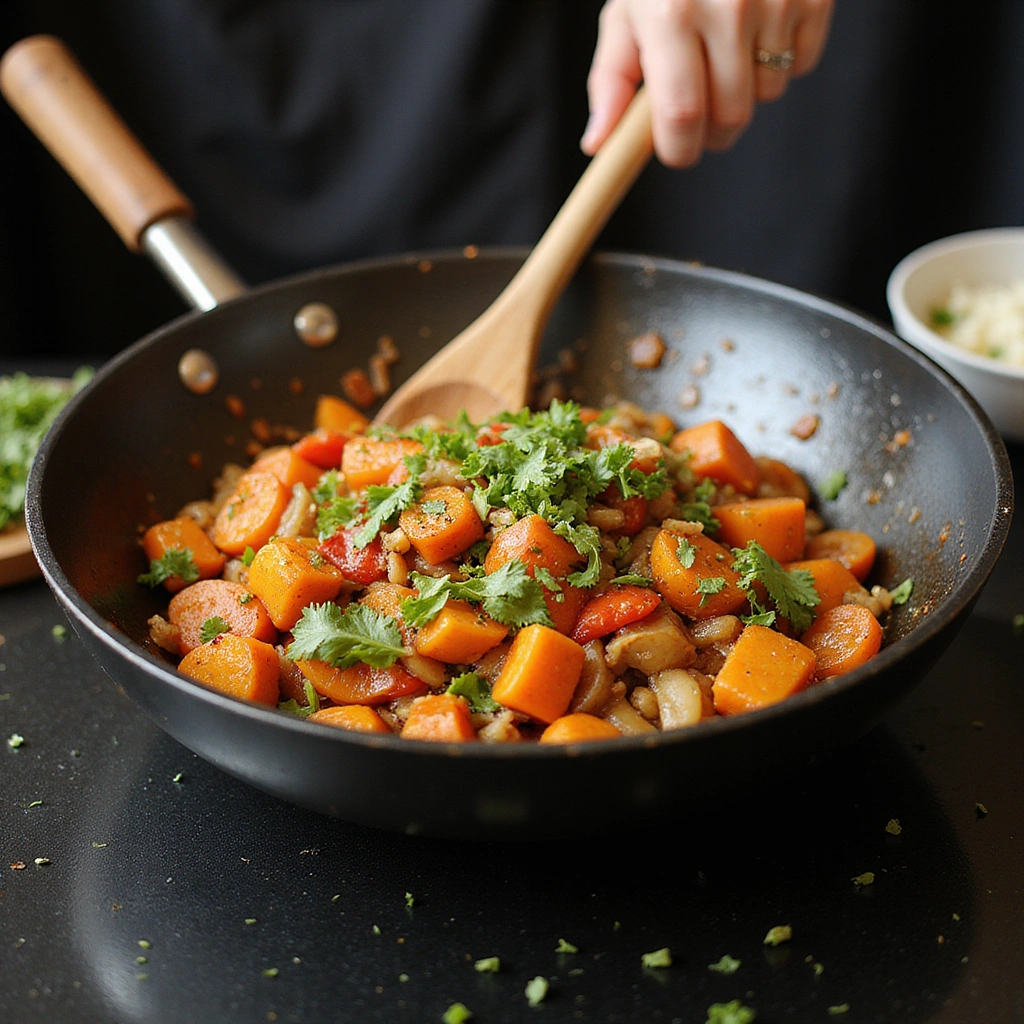
Continue to stir-fry for another minute to allow the flavors to meld.
Ensure all ingredients are heated through and well combined.
This final toss is key to prevent any sticking and to enhance flavor integration.
Look for a slight caramelization on the noodles for added depth.
Step 8: Serve and Enjoy
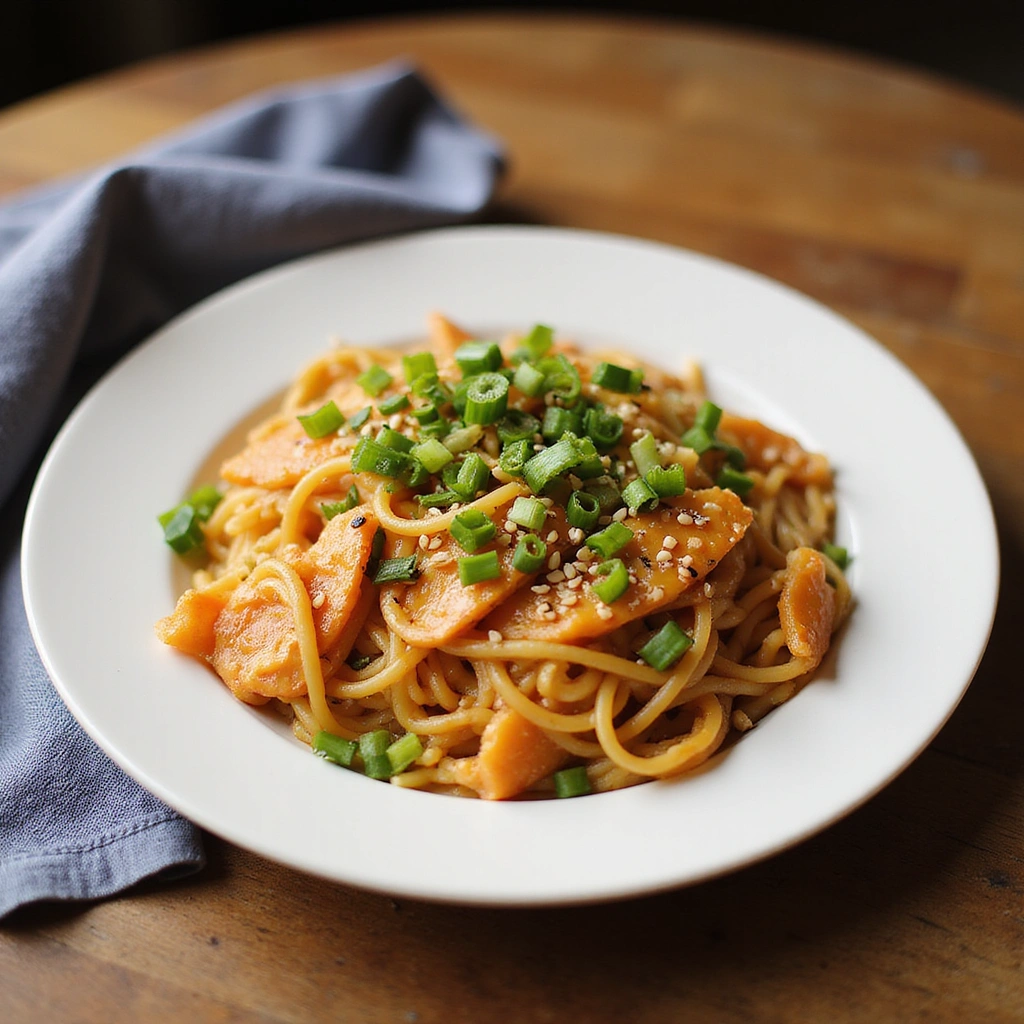
Transfer the stir fry to a serving dish or individual bowls.
Garnish with chopped scallions or sesame seeds for extra flavor and visual appeal.
Serve immediately while hot for best results.
Encourage everyone to dig in and enjoy the delightful flavors.
Critical Timing and Temperature Guide
High Heat Cooking: Maintaining high heat is crucial for stir-frying; typically, this means your wok should be around 400-450°F. If the vegetables are browning too quickly, reduce the heat slightly to avoid burning.
Vegetable Doneness: Vegetables should be vibrant and slightly tender but still crisp, usually taking 2-3 minutes. Overcooking can lead to a mushy texture, so monitor closely.
Noodle Heating: When incorporating the noodles, they should be heated through in about 1-2 minutes. If they cool down too much, they may clump together.
Pro Tips for Chinese Egg Noodle Stir Fry Full Of Flavor
• Ingredient Selection: Choose fresh, high-quality vegetables for the best flavor, especially bell peppers and snap peas.
• Preparation Secret: Rinse cooked noodles in cold water to stop cooking and prevent sticking.
• Temperature Management: Ensure that your wok is extremely hot before adding ingredients for optimal stir-frying.
• Texture Enhancement: Stir-fry quickly at high heat to maintain the crunchiness of vegetables and the tenderness of noodles.
• Flavor Layering: Add sauces gradually rather than all at once to control the flavor intensity.
• Make-Ahead Strategies: Prep vegetables in advance and store them in airtight containers to save time.
• Restaurant-Quality Finishing Touches: A sprinkle of toasted sesame seeds or fresh herbs can elevate the dish visually and flavor-wise.
• Equipment Optimization: Use a well-seasoned wok for the best non-stick properties.
Troubleshooting Common Issues
• Texture Too Dense: This often results from overcooking the noodles or not using high enough heat. Ensure your wok is hot and cook noodles until just al dente before adding.
• Flavors Unbalanced: If the dish lacks flavor, consider adjusting the sauce quantities. Add more soy sauce or a touch of sugar to enhance sweetness.
• Vegetables Overcooked: This can happen if they are added too early. Add them in stages, starting with denser vegetables and finishing with tender ones.
• Noodles Sticking Together: If this occurs, ensure you rinse the noodles well and separate them before adding to the wok. Stir quickly to avoid clumping.
• Burnt Garlic: If garlic burns, it can impart a bitter taste. Add it later in the cooking process once the oil is hot but not smoking.
Variations and Regional Differences
• Sichuan Style: This version incorporates spicy ingredients like chili oil and Sichuan peppercorns, enhancing the dish’s heat and complexity.
• Hong Kong Style: Often includes a variety of seafood such as shrimp or squid, adding a different flavor dimension and texture.
• Vegetarian Variation: Replace meat with tofu and add more vegetables for a hearty vegetarian option without sacrificing flavor.
• Modern Interpretations: Contemporary versions may substitute traditional ingredients for gluten-free noodles or introduce unique sauces like teriyaki.
Food Science Behind the Recipe
• Maillard Reaction: This chemical reaction occurs when proteins and sugars in food are exposed to heat, creating complex flavors and browning in the noodles and vegetables.
• Starch Gelatinization: Cooking the noodles allows starches to gelatinize, which helps them absorb flavors and sauces, contributing to the overall taste.
• Emulsification: When oil and water-based sauces are mixed, they create a stable mixture that coats the noodles and vegetables, enhancing the dish’s flavor and texture.
Frequently Asked Questions
What’s the most common mistake people make when preparing Simple Chinese Egg Noodle Stir Fry? The most common mistake is overcrowding the wok, which can lead to steaming instead of stir-frying. Always cook in batches if necessary.
Can I prepare components of this dish in advance? Yes, you can chop vegetables and cook noodles ahead of time, storing them in the refrigerator for up to 3 days.
How do I adapt this recipe for dietary restrictions? Substitute egg noodles with rice noodles for gluten-free options, and use tamari instead of soy sauce for gluten-free soy sauce.
What’s the best way to store and reheat leftovers? Store in an airtight container in the fridge for up to 3 days, and reheat in a pan over medium heat, adding a splash of water to prevent drying out.
Can I freeze this dish? It’s not recommended to freeze stir fry as the texture of the noodles and vegetables may change. However, you can freeze the cooked noodles and veggies separately for later use.
What wine or beverages pair best with this dish? A light white wine like Sauvignon Blanc complements the flavors well, along with green tea for a traditional pairing.
How can I scale this recipe up for a crowd? Simply multiply the ingredients proportionally, but consider cooking in batches to ensure even cooking.
What side dishes complement this recipe best? Fried rice or a simple cucumber salad works well to balance the flavors of the stir fry.
How do professional chefs elevate this dish for restaurant service? They often add a variety of garnishes and use high-quality ingredients to enhance both flavor and presentation.
Serving and Presentation Guide
• Traditional Presentation: Serve the stir fry in a large bowl, garnished with sliced scallions and sesame seeds, using chopsticks for an authentic touch.
• Modern Plating Ideas: Use a white plate for a clean look, artfully arranging the stir fry and garnishing with microgreens or edible flowers for a fresh touch.
• Accompaniment Suggestions: Serve with a side of spring rolls or dumplings to round out the meal.
• Special Occasion Presentation: For celebrations, serve in individual portions with decorative garnishes and a sprig of cilantro for an upscale presentation.
Conclusion
I hope this Simple Chinese Egg Noodle Stir Fry becomes a beloved dish in your home.
Its vibrant flavors and easy preparation make it perfect for any occasion.
Don’t hesitate to experiment with your favorite ingredients to make it your own.

